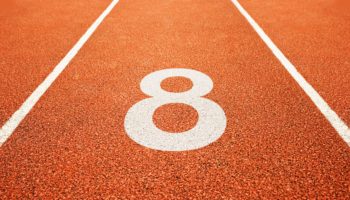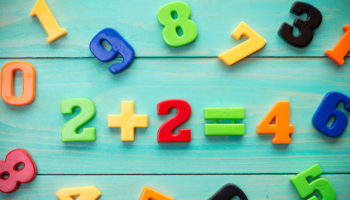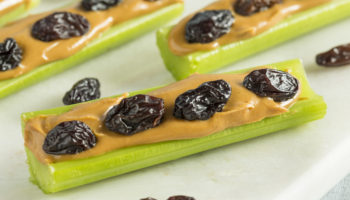Angel Avery-Wright
Math in a preschool classroom can be found everywhere, from a math interest center to other play areas. Materials for supporting math can include games, dramatic play props, blocks, musical materials, and more. Incorporating math materials and activities into the classroom are as essential as having blocks and dramatic play and can be just as interesting to a preschooler.
Materials for a preschool math center should include ways to learn written numbers, count, recognize shapes, compare quantities, and measure.
Written numbers can be included by using posters, games and materials. Displaying a class schedule that includes times or photos of clocks is one way to enhance a child’s math learning. A cash register with money can be used in dramatic play. Clocks in the classroom that are high on a wall are not going to attract children’s interest but a clock in dramatic play will peak children’s curiosity. Another way to include written numbers in dramatic play is to have menus with prices, whether teacher made or menus from restaurants.
Counting can be done every day in the classroom. We all know teachers can count, so let the children do it. Let the children do the counting when lining up. Change it up when you can. Count in Spanish or French or German. Count by twos if the children are able. Count the children for attendance. Counting the number of girls versus boys leads right into comparing quantities. Compare how many children are present versus how many are absent. Let the children write these numbers on a whiteboard and compare them.
Adding math to blocks can be done in a variety of ways. Giving children photos of things they can build with blocks can focus attention on shapes. A triangle on top of a square or two rectangles makes a house. Take a photo of it and other designs and create an “architect’s book of designs.”
Measuring instruments help children learn about numbers in another way. How tall is your building? Tapes, rulers, and growth charts are just a few ways to teach measurement. Place a variety of objects such as a pen, crayon, shoe, plastic fork, scarf, etc. in a box with a ruler or measuring tape and encourage children to measure the different items. Items can be changed to add to the weekly theme or seasonal changes.
Graphing is another great way to add math to the program. Graphing on a regular basis teaches counting, written numbers and comparing quantities. Graphs can be on any topic from “What kind of pet do you have?” to “What color is your favorite apple?” Include written numbers in each column and then discuss which choices were more/less in quantity.
To add math activities and games to the environment, use existing spaces. Interactive displays on the wall or the top of a cubby will draw in children’s attention. Cover cubby tops with matching games using clear contact paper and change them out when interest wanes.
These are just a few of the endless ideas for including math in the classroom. Think outside the box and remember, store bought and teacher made items both have a place here. Be creative and think math!




